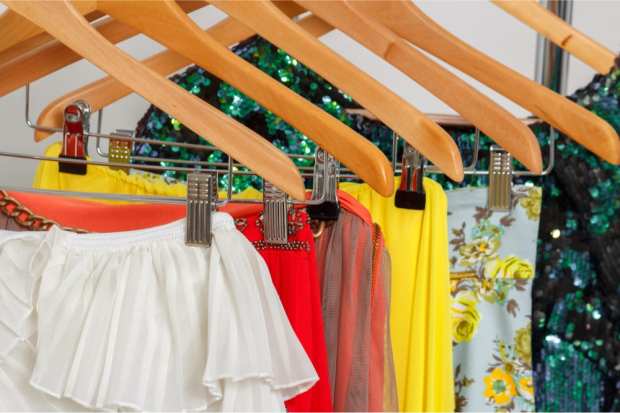Rent The Runway To Shutter Stores, Focus On Digital Shift

Capping what has been a tough 2020 so far for clothing consignment and rentals, Rent the Runway announced Friday (Aug. 14) that it is closing its five stores for good to focus on its eCommerce business and add more customer drop boxes to its business model.
The company told CNBC its New York City flagship will be turned into a permanent drop-off site. The other four locations, Chicago, Los Angeles, San Francisco and Washington, D.C. will be closed permanently. The stores had been doing double duty as a place to shop for the company’s rental inventory as well as a spot to exchange old apparel for that inventory. The stores also provided styling services.
Rent the Runway said it will grow its network of drop-off locations, most likely through partnerships with other retailers and companies with a physical presence such as WeWork. The company has also partnered with Nordstrom and West Elm.
“This has been an evolution over the past two to three years,” Anushka Salinas, president and chief operating officer, told CNBC. “We always knew we wanted and will continue to have a physical presence strategy. What we know now is the physical presence strategy is about drop boxes.”
Regardless of how its executives spin it, the pandemic has been devastating for the apparel business in general and the consignment and rental businesses in particular. Rent the Runway was hit by the full force of the pandemic and its retail consequences: store closings, lack of brick-and-mortar traffic after opening and consumer obsession with avoiding illness. Around 55 percent of American shoppers are hesitant about the cleanliness of secondhand and rented clothes, according to data from retail tracking firm Thinknum.
“Rent the Runway was one of the first fashion rental platforms to make it big, and it might also be the first to go,” said Thinknum in a July 31 report. “People mainly rent formal and workwear, not casual basics. With the country working from home and spending nights inside, rental companies haven’t been benefitting from the current eCommerce boom. To make matters worse, Gen Z isn’t on board. Although teens are dedicated to sustainability — one of clothing rental’s biggest selling points — a UK study shows that only 20% of respondents ages 16-24 had ever rented clothing.”
Rent the Runway had been rumored as a candidate for an initial public offering (IPO) in better days. According to TechCrunch it has raised $380 million in funding so far from investors like Alibaba’s Jack Ma and T. Rowe Capital.
“But the shoe didn’t always fit,” the news outlet noted. “Earlier this year, Rent the Runway struggled with supply chain issues that left customers disgruntled. Then, the pandemic threatened the market of luxury wear more broadly: Who needs a ball gown while Zooming from home? In early March, the business went through a restructuring, furloughing and laying off nearly half of its workforce, including every retail employee at its physical locations.”
Not that going public would have helped in the pandemic. Rent the Runway competitor and consignment retailer The RealReal is publicly traded and operates four stores, two in New York and one each in Los Angeles and San Francisco. However, all of them were closed from the beginning of the pandemic through mid-June. The company has plans to open a Chicago location in Q4.
The RealReal also sells online, with inventory from designers who are unloading goods and individual sellers who consign high-end fashion apparel. But supply problems from sellers were a substantial issue for the company during Q2. It saw a 29 percent year-over-year decrease in the number of units shipped to eCommerce processing facilities. All in, the company’s quarterly revenue declined 21 percent from a year earlier to $57.4 million. Gross merchandise value also decreased 20 percent to $182.8 million, and its net loss widened to $42.9 million from $26.9 million for the same period last year.
PYMNTS research, now based on a national sample of more than 20,000 consumers queried since March 6, consistently shows this digital shift, with an increasing number of consumers now saying they’ll stick with, even as they reenter the physical world.
“Consumers who have shifted to a largely digital-first world over the last five months will need an equally strong force — like the internet breaking completely apart — to move them completely away from the digital habits they have developed (and now enjoy) and onto something entirely different,” wrote PYMNTS CEO Karen Webster on Aug. 10. “And this shift is most pronounced for those buying retail products. In truth, the pandemic was the big force that got consumers to do more of what they had already begun to do: shift their shopping experiences away from physical stores and more online. But it was a force far greater than the promise of a more efficient and seamless 24/7/365 shopping experience that got them over the hump. Delivering a safer and more certain shopping experience is why consumers accelerated their shift, and why today they feel comfortable sticking with it.”
